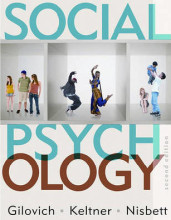Stereotyping, Prejudice, and Discrimination
5 important questions on Stereotyping, Prejudice, and Discrimination
Like all attitudes, attitudes toward different social groups are composed of three components
- Affective: prejudice refers to the general attitude structure, but more specifically the emotional component.
- Behavioral: discrimination is differential treatment due to group membership.
- Cognitive: stereotype is a generalization about a group that is seen as descriptive of all members of that group
Benevolent racism (or sexism)
Race and gender stereotypes often contain a mix of both positive and negative sentiments
Trouble with positive stereotypes
Can be used to justify holding other negative stereotypes
>For instance, may believe that women are kinder and more nurturing but that they are less capable than men
>Holding a positive stereotype can be seen to justify or balance out negative stereotypes
May disparage members that don’t fit the positive stereotype
- Higher grades + faster learning
- Never study anything twice
- 100% sure, 100% understanding
Realistic group conflict theory
A theory that group conflict, prejudice, and discrimination are likely to arise over competition between groups for limited resources.
Competition for scarce resources will increase conflict among groups, resulting in prejudice and discrimination.
Resources may be physical, economic, or conceptual
>>For example, competition over territory, jobs, religious identity, and so on
Conditions for prejudice reduction
- Groups need to feel equal in status
- Groups need to a have shared, superordinate goal
- Surrounding social norms need to encourage intergroup interactions
- Interactions need to based at an individual level
>One-to-one interactions
The question on the page originate from the summary of the following study material:
- A unique study and practice tool
- Never study anything twice again
- Get the grades you hope for
- 100% sure, 100% understanding
































